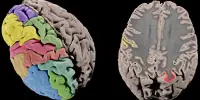In general, advances in DNA technology and genetic engineering have contributed significantly to the understanding of numerous aspects of biological activities and processes. CRISPR-Cas9, synthetic biology, and gene editing are common techniques used by scientists to change and study DNA, which might lead to surprising discoveries.
Researchers at the Karolinska Institutet in Sweden employed DNA origami, the art of folding DNA into desired structures, to demonstrate how a key cell receptor can be triggered in a previously unknown manner. The findings pave the way for a better understanding of the Notch signaling system and its role in a variety of critical disorders. The study was published in Nature Communications.
Notch is a cell receptor that is essential to a wide range of animals and plays an important part in a variety of activities, including early embryonic development in flies and humans. Notch regulates the differentiation of stem cells into various cell types throughout the body. Defects in this signaling pathway can lead to catastrophic disorders, including cancer.
This is a technique that allows us to place molecules of the Jag1 protein at very small distances from each other in different patterns, and then we expose these patterns to stem cells with Notch receptors.
Björn Högberg
So far, the prevailing interpretation of the receptor’s function has been that it is activated solely mechanically, by a neighboring cell pushing on it, implying that signaling happens only through direct connection between cells.
However, researchers at Karolinska Institutet now report that the activation of Notch can also be achieved ‘on demand’ with the help of a protein called Jag1. The researchers placed the protein on a DNA structure created by so-called DNA origami, a technique that makes it possible to build structures of any shape at the nanoscale using DNA as a building material. In this case, the DNA structure was moulded into a nano-sized stick that can carry the protein to the cell surface.

“This is a technique that allows us to place molecules of the Jag1 protein at very small distances from each other in different patterns, and then we have exposed these patterns to stem cells with Notch receptors,” says Björn Högberg, professor at the Department of Medical Biochemistry and Biophysics, Karolinska Institutet, who led the study together with KI researcher Ioanna Smyrlaki at the same department.
The findings indicate that the Notch receptor can be activated to varying degrees depending on the shape of the pattern and the local protein content. However, many uncertainties remain concerning how this signaling occurs.
“We are now collaborating with other researchers to see if we can make this method work in vivo as well, i.e. in a mouse model and not just in test tubes,” Björn Högberg, the study’s lead author, “This is basic research, but Notch plays an important role in several diseases, including a type of leukemia and the developmental disorder Alagille Syndrome.” We believe that the findings will contribute to a better understanding of these disorders.”
















